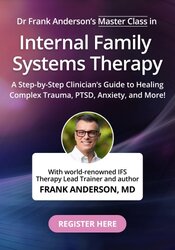Enrol in an online course today for flexible, self-paced learning—no fixed schedule required. Plus, enjoy lifetime access to course materials for convenient revisiting.
How ‘Anxiety Disorders’ Trick Us

Here’s the core of it. People who suffer with chronic anxiety disorders get caught up in a long, fruitless struggle against the symptoms of anxiety, and it only makes their troubles more persistent and severe. “The harder I try”, they say with despair, “the worse it gets!”
They feel depressed and discouraged because they think this means there’s something wrong with them. What’s actually wrong, though, is the methods they’re trying. They respond to the anxiety with counterproductive replies, responses that do make it worse, because they’re literally getting tricked by anxiety.
Therein lies both the problem and the solution.
People get tricked into treating anxiety as a dangerous enemy. They try to fight it off and they try to run away from it, because that’s what we do with enemies. It’s not hard to see why they think of anxiety as dangerous. People with panic disorder experience episodes of powerful physical fear which lead them to believe they’re about to die or lose control. People with social anxiety disorder have episodes in which they fear making a humiliating public display of their anxiety and losing everyone’s respect and friendship. Obsessive compulsive episodes involve fears of causing some calamity, like burning down the neighborhood by careless use of the stove. In the heat of the moment of high anxiety and panic, these fears of catastrophe appear persuasive.
Then the episodes end, each time, without any of these terrible calamities actually occurring. But even that doesn’t help! Going forward, the individual is more afraid and uncertain, rather than less. It’s so frustrating, and bewildering, to clients and their loved ones as well. “Why can’t I get over this?” they wonder.
This is the trick of an anxiety disorder: people treat it like danger when it’s actually discomfort. The fears and sensations are powerful, but they’re still discomfort rather than danger. When people get tricked, they try to protect themselves, and that makes them feel worse because there’s nothing to fight off or run from. Once they understand that the chronic anxiety is a sign of discomfort rather than danger, they can replace the protection with a set of accepting responses that will defuse, rather than enhance, the anxiety. Then they can return their energy and attention back to what used to be more important to them before these episodes began.
Why don’t people realise that the anxiety isn’t dangerous, stop their fight and flight responses, and experience a spontaneous remission on their own? Because they get fooled by their reliance on a variety of safety behaviors, responses they hope will help, but which actually make their troubles more persistent and severe. They continually try to protect themselves with avoidance, distraction, support people, support objects, reassurance, rituals and more. They assume these responses have actually protected them from danger in the past, and this prevents them from realising that the anxiety is harmless.
Protecting yourself from danger is a good thing. But protecting yourself from discomfort is a bad thing, because it leads you to feel more vulnerable, worried, and dependent over time. This is the core of the problem with anxiety disorders. Note to ICD and DSM committees: what we presently call the anxiety disorders might be more usefully labeled ‘the disorders of excessive self-protection’, because that’s really how they function. Helping people find ways to work with, rather than against, anxiety symptoms – to discard all of the safety behaviors and step into the anxiety symptoms rather than run away from them… this is more truly the path out.
Chronic Anxiety: Powerful Treatment Methods to Break the Anxiety, a one-day workshop with Dave Carbonell, Ph. D, is in London W14 on 21st Sep 2019.


















